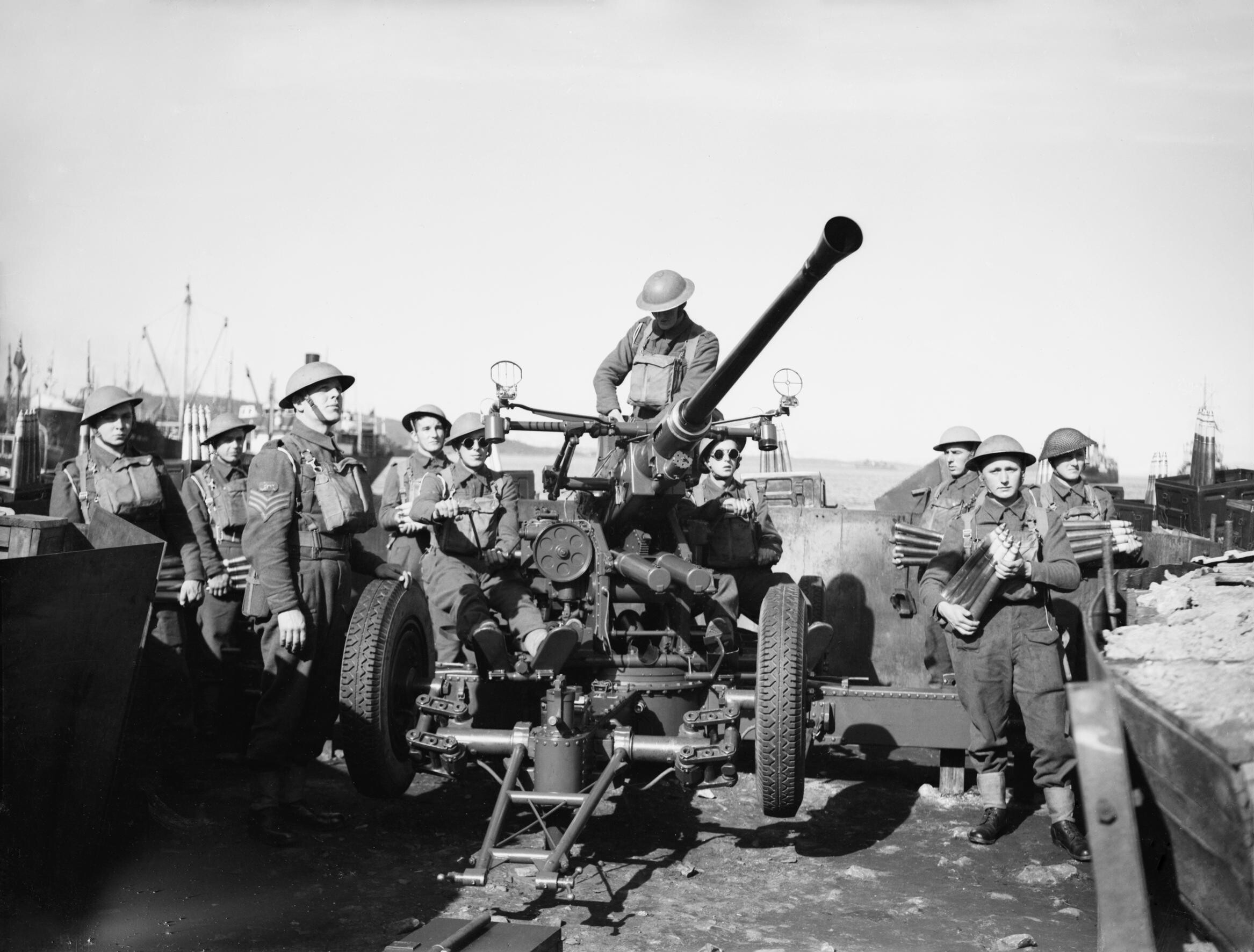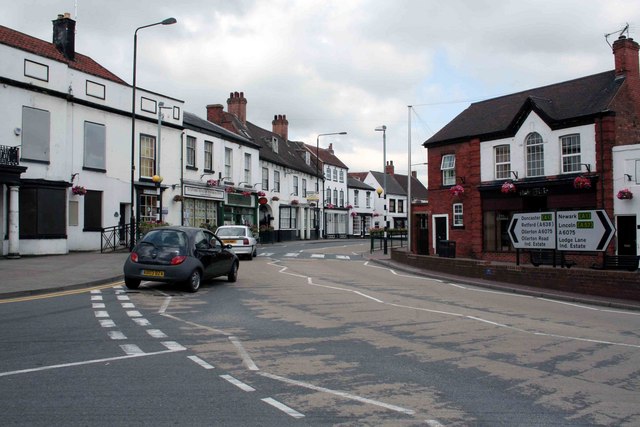|
56th (East Lancashire) Light Anti-Aircraft Regiment, Royal Artillery
The 56th (East Lancashire) Light Anti-Aircraft Regiment, Royal Artillery, (56th (EL) LAA Rgt) was a Royal Artillery (RA) air defence unit of Britain's part-time Territorial Army (TA) raised as a duplicate unit just before the outbreak of World War II. It served in the Norwegian Campaign and then joined 8th Armoured Division. It was sent to Egypt and participated in the Second Battle of El Alamein and the subsequent pursuit across North Africa. It then fought in the Italian Campaign, including defending the Salerno and Anzio beachheads. It often operated under US command, on one occasion in an anti-tank role. The regiment reformed as heavy AA artillery in the postwar TA and continued until 1955 when it merged with other units in Lancashire. Origin After the Munich Crisis Britain's part-time Territorial Army was rapidly doubled in size. In June 1939 the Burnley-based 52nd (East Lancashire) Light Anti-Aircraft Regiment, Royal Artillery (itself only recently converted to the lig ... [...More Info...] [...Related Items...] OR: [Wikipedia] [Google] [Baidu] |
Royal Artillery
The Royal Regiment of Artillery, commonly referred to as the Royal Artillery (RA) and colloquially known as "The Gunners", is one of two regiments that make up the artillery arm of the British Army. The Royal Regiment of Artillery comprises thirteen Regular Army regiments, the King's Troop Royal Horse Artillery and five Army Reserve regiments. History Formation to 1799 Artillery was used by the English army as early as the Battle of Crécy in 1346, while Henry VIII established it as a semi-permanent function in the 16th century. Until the early 18th century, the majority of British regiments were raised for specific campaigns and disbanded on completion. An exception were gunners based at the Tower of London, Portsmouth and other forts around Britain, who were controlled by the Ordnance Office and stored and maintained equipment and provided personnel for field artillery 'traynes' that were organised as needed. These personnel, responsible in peacetime for maintaining the ... [...More Info...] [...Related Items...] OR: [Wikipedia] [Google] [Baidu] |
Hatfield, South Yorkshire
Hatfield is a town and civil parish in the City of Doncaster in South Yorkshire, England. It had a population of 17,236 at the 2011 Census. The town is located on the A18 road between Doncaster and Scunthorpe, and to the west of the M18 motorway. It shares a railway station with Stainforth on the line between Goole and Scunthorpe, and Doncaster. Recorded history in the parish extends as far back as 730, when Bede wrote about the Northumbrian King, Edwin, being killed in battle in the area. History Hatfield (called Heathfield historically) is an ancient settlement and a palace of the Northumbrian Kingdom called Meicen, (or Meigen). On 12 October 633 AD, King Edwin was killed in the Battle of Hatfield Chase by Penda, King of Mercia. Penda was assisted in the battle by the Welsh under the leadership of Cadwallon ap Cadfan, Welsh (British) King of Gwynedd. Osric, a possible successor to Edwin, was also killed in the battle. Edwin's son Edfrith surrendered to Penda. It is tho ... [...More Info...] [...Related Items...] OR: [Wikipedia] [Google] [Baidu] |
Tuxford
Tuxford is a historic market town and a civil parish in the Bassetlaw District, Bassetlaw district of Nottinghamshire, England. At the 2001 census, it had a population of 2,516, increasing to 2,649 at the 2011 census. Geography Nearby towns are Ollerton, Nottinghamshire, Ollerton, Retford, Worksop, Mansfield and Newark-on-Trent. The nearest cities are Lincoln, England, Lincoln and Nottingham. The town is located near the border with Lincolnshire in The Dukeries. The A6075 passes through east–west and connects the A57 road, A57 to Ollerton and Mansfield. The East Coast Main Line passes close to the east. The A611 previously went east–west through the town; this is now the A6075; the A611 now goes from Mansfield to Hucknall. The Great North Road (United Kingdom), Great North Road runs through the town (now B1164), though the majority of traffic now uses the modern A1 road (Great Britain), A1 trunk road, which splits the town in two. The town was bypassed in 1967. The se ... [...More Info...] [...Related Items...] OR: [Wikipedia] [Google] [Baidu] |
Western Command (United Kingdom)
Western Command was a command of the British Army. History Western Command was established in 1905 and was originally called the Welsh & Midland Command before changing its name in 1906. In 1907 Western Command relocated to Watergate House, Chester, Watergate House in Chester. In 1938, after a brief stay in temporary accommodation at Boughton, Cheshire, Boughton, it moved to a new purpose-built Georgian architecture, neo-Georgian property known as Churchill House, Chester, Churchill House at Queen's Park in Chester. First World War Army Order No 324, issued on 21 August 1914, authorised the formation of a 'New Army' of six Divisions, manned by volunteers who had responded to Herbert Kitchener, 1st Earl Kitchener, Earl Kitchener's appeal (hence the First New Army was known as 'K1'). Each division was to be under the administration of one of the Home Commands, and Western Command formed what became the 13th (Western) Division. It was followed by 19th (Western) Division of K2 in Sep ... [...More Info...] [...Related Items...] OR: [Wikipedia] [Google] [Baidu] |
Anti-Aircraft Command
Anti-Aircraft Command (AA Command, or "Ack-Ack Command") was a British Army command of the Second World War that controlled the Territorial Army anti-aircraft artillery and searchlight formations and units defending the United Kingdom. Origin The formation of a Command-level body of anti-aircraft defences had been announced in 1938, but Anti-Aircraft Command was not formed until 1 April 1939 under General Sir Alan Brooke, who had been commander of Anti-Aircraft Corps. He then passed control to Sir Frederick Pile, who would remain in command until the end of the war.Routledge, Chapter 26. AA Command was under the operational direction of RAF Fighter Command as part of Air Defence of Great Britain, and occupied a headquarters known as ''Glenthorn'' in the grounds of Bentley Priory, home of Fighter Command. The majority of AA Command's guns and searchlights were operated by Territorial Army units. Some Regular Army units joined after they returned from the Dunkirk evacuation. L ... [...More Info...] [...Related Items...] OR: [Wikipedia] [Google] [Baidu] |
Bofors 40 Mm Gun
Bofors 40 mm gun is a name or designation given to two models of 40 mm calibre anti-aircraft guns designed and developed by the Swedish company Bofors: *Bofors 40 mm L/60 gun - developed in the 1930s, widely used in World War II and into the 1990s *Bofors 40 mm Automatic Gun L/70 - modernized replacement design of the 40 mm L/60, entering service in the 1950s Other Bofors gun disambiguation pages *Bofors 57 mm gun The Bofors 57 mm gun is a nickname or designation given to several types of guns designed and developed by the Swedish company Bofors: *, a 57 mm anti tank gun for the Swedish army during WW2. * Bofors 57 mm Automatic Gun L/50, a 57 ... * Bofors 120 mm gun External links {{set index ... [...More Info...] [...Related Items...] OR: [Wikipedia] [Google] [Baidu] |
Light Machine Gun
A light machine gun (LMG) is a light-weight machine gun designed to be operated by a single infantryman, with or without an assistant, as an infantry support weapon. LMGs firing cartridges of the same caliber as the other riflemen of the same combat unit are often referred to as squad automatic weapons. Characteristics While early light machine guns fired full-powered rifle cartridges, modern light machine guns often fire smaller-caliber rifle cartridges than medium machine guns – generally the same intermediate cartridge fired by a service's standard assault rifle – and are usually lighter and more compact. Some LMGs, such as the Russian RPK, are modifications of existing designs and designed to share the same ammunition. Adaptations to the original rifle generally include a larger magazine, a heavier barrel to resist overheating, a more robust mechanism to support sustained fire and a bipod. A light machine gun is also defined by its usage as well as its specificati ... [...More Info...] [...Related Items...] OR: [Wikipedia] [Google] [Baidu] |
52nd (East Lancashire) Light Anti-Aircraft Regiment, Royal Artillery
The 52nd (East Lancashire) Light Anti-Aircraft Regiment, (52nd (EL) LAA Rgt) was a Royal Artillery (RA) air defence unit of Britain's part-time Territorial Army (TA) converted from a field artillery unit just before the outbreak of World War II. It served in the Battle of France, shooting down a large number of aircraft before being evacuated from Dunkirk. It was then sent to the Mediterranean, where detached batteries were destroyed in the fighting in Greece and Crete. The reformed regiment then took part in the defence of the Suez Canal and later in the Italian Campaign. It continued in the postwar TA until 1955 when it merged with other units in Lancashire. Origin During the 1930s the increasing need for anti-aircraft (AA) defence was addressed by converting a number of existing TA units to the AA role. One unit chosen for conversion was the 93rd (East Lancashire) Field Brigade, Royal Artillery, based at Burnley and commanded by Lieutenant-Colonel C.H. Mather. After conve ... [...More Info...] [...Related Items...] OR: [Wikipedia] [Google] [Baidu] |
Burnley
Burnley () is a town and the administrative centre of the wider Borough of Burnley in Lancashire, England, with a 2001 population of 73,021. It is north of Manchester and east of Preston, at the confluence of the River Calder and River Brun. The town is located near the countryside to the south and east, with the towns of Padiham and Brierfield to the west and north respectively. It has a reputation as a regional centre of excellence for the manufacturing and aerospace industries. The town began to develop in the early medieval period as a number of farming hamlets surrounded by manor houses and royal forests, and has held a market for more than 700 years. During the Industrial Revolution it became one of Lancashire's most prominent mill towns; at its peak, it was one of the world's largest producers of cotton cloth and a major centre of engineering. Burnley has retained a strong manufacturing sector, and has strong economic links with the cities of Manchester and Leed ... [...More Info...] [...Related Items...] OR: [Wikipedia] [Google] [Baidu] |
Munich Crisis
The Munich Agreement ( cs, Mnichovská dohoda; sk, Mníchovská dohoda; german: Münchner Abkommen) was an agreement concluded at Munich on 30 September 1938, by Germany, the United Kingdom, France, and Italy. It provided "cession to Germany of the Sudeten German territory" of Czechoslovakia, despite the existence of a 1924 alliance agreement and 1925 military pact between France and the Czechoslovak Republic, for which it is also known as the Munich Betrayal (; ). Most of Europe celebrated the Munich agreement, which was presented as a way to prevent a major war on the continent. The four powers agreed to the German annexation of the Czechoslovak borderland areas named the Sudetenland, where more than three million people, mainly ethnic Germans, lived. Adolf Hitler announced that it was his last territorial claim in Northern Europe. Germany had started a low-intensity undeclared war on Czechoslovakia on 17 September 1938. In reaction, the United Kingdom and France on 20 Sep ... [...More Info...] [...Related Items...] OR: [Wikipedia] [Google] [Baidu] |






